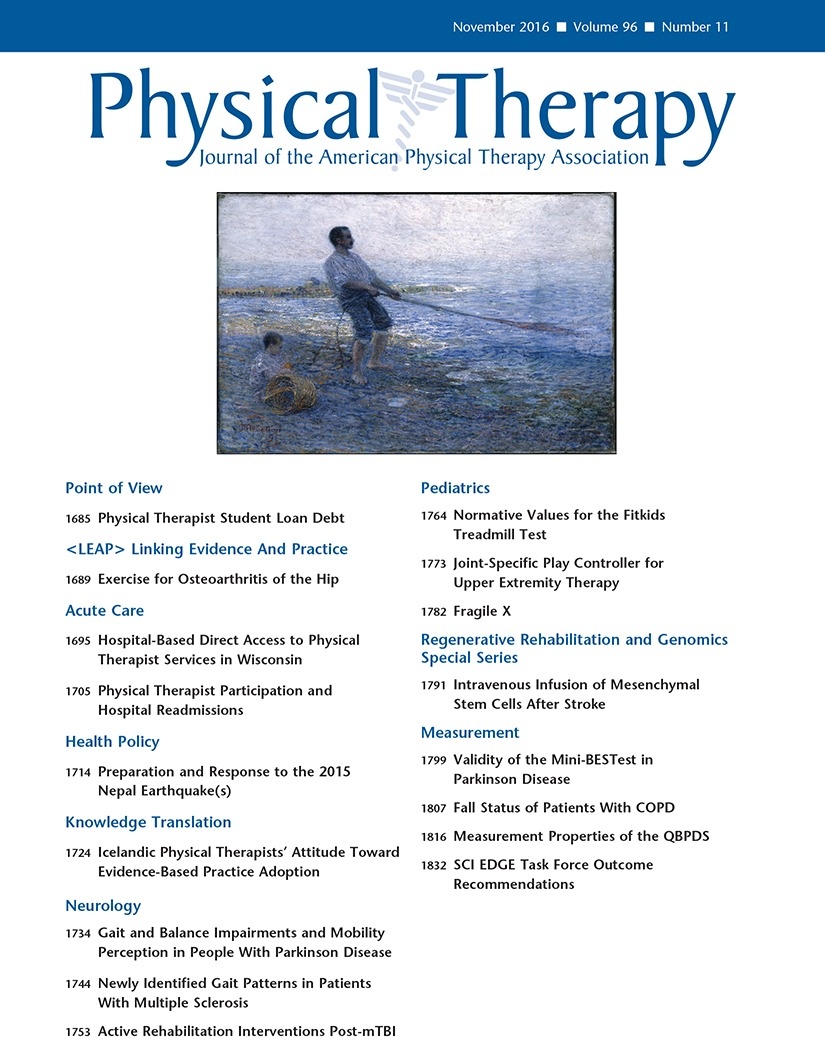
Strengthening and optimal movements for painful shoulders (STOMPS)

Strengthening and optimal movements for painful shoulders (STOMPS)
Strengthening and optimal movements for painful shoulders (STOMPS) in chronic spinal cord injury: A randomized controlled trial
Phys Ther. 2011 Mar;91(3):305-24. Epub 2011 Feb 3Did you know you're eligible to earn 0.5 CME credits for reading this report? Click Here
OE EXCLUSIVE
Dr. Mulroy discusses strengthening and optimal movements for shoulder pain
Synopsis
80 patients with spinal cord injuries, who are wheel chair bound and suffer from shoulder pain, were randomized to either an exercise therapy and optimization training group or an attention control group. The results of this study indicate that exercise intervention and optimization training produce reductions in shoulder pain, while also providing improvements in mental health and subjective qual...
To view the full content, login to your account,
or start your 30-day FREE Trial today.
FREE TRIAL
LOGIN
Forgot Password?
Explore some of our unlocked ACE Reports below!

Learn about our AI Driven
High Impact Search Feature
Our AI driven High Impact metric calculates the impact an article will have by considering both the publishing journal and the content of the article itself. Built using the latest advances in natural language processing, OE High Impact predicts an article’s future number of citations better than impact factor alone.
Continue



 LOGIN
LOGIN

Join the Conversation
Please Login or Join to leave comments.